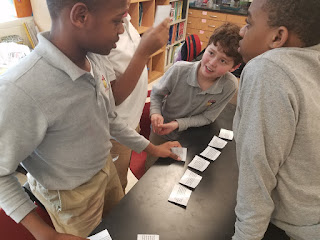As a teacher, I have always struggled with what to plan for the first day of school. I want to do something fun, to get the students excited about my class. I want to do something that gets students moving and working together, since they will do that a lot during class this year. And I also want to do something related to the syllabus and classroom expectations. But expectations can be boring and tedious. And unstructured games can be considered a waste of time by administrators.
This year, I created a breakout game for the first day of classes. I was unsure how the students would respond, but they
LOVED it. All my students were engaged, excited about the class, and referring to the class syllabus.
After a quick introduction to me and the game, students were put in groups and given this first clue. The students needed to read through the syllabus to fill in each blank. Students then use the highlighted letters to create a short URL.
When typed into the computer, the short URL leads to a cypher, which students can use to decode clue two. Clue two asks them to take one envelope from the grab a lab table.

In the envelope, students will find clue 3. When they unscramble the letters, they find the four materials that must be brought to class every day.

When they find the correct 3 digit code, this opens a box on the front table containing puzzle pieces and clue four. When they assemble the pieces, they see four pictures of my summer adventures.
On the back, they see the shape, matching my favorite color.
Check out my
Teachers Pay Teachers page to download this
FREE game. It is fully editable, so you can make it work for your own classroom.
Or check out my blog post
Using Breakouts in the Science Classroom to see other ways I use breakouts in my classroom.
 Our school recently received grant funding for a 3D printer, and I wanted to find a way to get all of my students using it. We were in the middle of our DNA unit, so I decided to challenge each student to design a 3D model of the DNA molecule.
Our school recently received grant funding for a 3D printer, and I wanted to find a way to get all of my students using it. We were in the middle of our DNA unit, so I decided to challenge each student to design a 3D model of the DNA molecule.





















